
Folk Musical Instruments
The two main traditional instruments Kissamos are the lute and violin. The lute, came to Crete, long before the violin. Crusaders brought it from the Middle East during the 13th century. It was considered to produce a more tender, softer music.
Lyra appeared in Kissamos, but did not prevail, leaving more room for the violin, which since 1260 that was brought by the Venetians in Crete, was loved by many local musicians up to this day.
Other instruments used in the past and present of Cretan music are:
Habioli
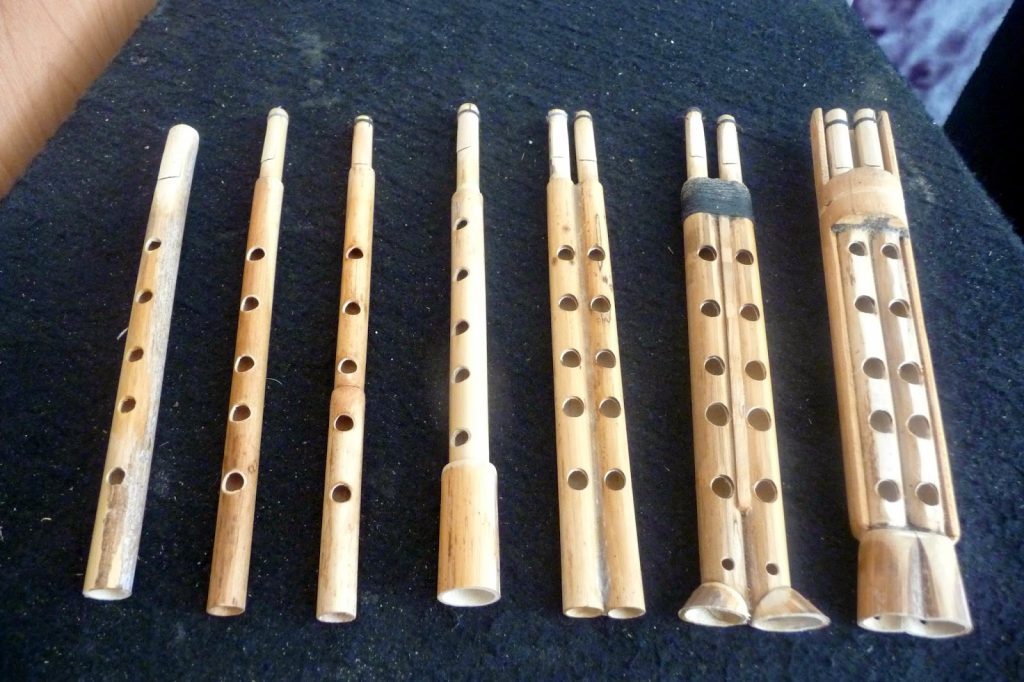
A type of wooden flute, having a side cut where the player blows air and it is sealed with a type of plug containing a thin slot in order to leave the air to pass through.
On the main body of the instrument where the plug finishes, a square hole is opened and then further down six holes on the front part and one behind that are used for creating the melody. Habioli, is primarily an instrument that is played on its own.
Bulgari

The bulgari or boulgari is a string instrument that originates from Turkey, especially from Anatolia among the Oghuz Turks living in the Taurus Mountains, especially to Egypt and Crete.
Belonging to the ‘tampoura’ family and closely related to the ‘tzoura’, it is played with strings been plucked with a pick. This long-necked lute first appeared towards the end of the 18th century and became well-known after 1915 through the Greeks of Asia Minor. It is rarely come across in Crete today.
Violin

An instrument originally from Italy with a worldwide impression, in many genres of music. On Crete it is seen before the years of the Venetians.
The violin was the most popular instrument in the prefectures of Crete.
However, in the prefecture of Chania it still has a dominant role, since it has more musical possibilities than the lyre. The most basic melodies of Cretan music have been first played and composed on the steps of the violin.
Askopandoura
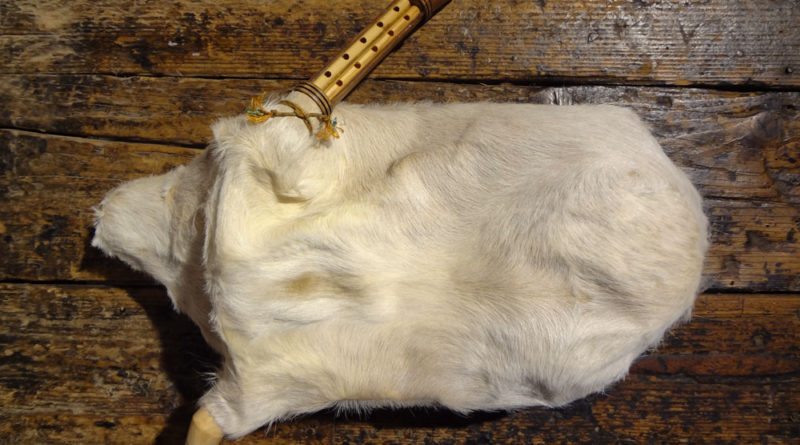
The askopandoura is a type of bagpipe played as a traditional instrument on the Greek island of Crete. It is constituted by leather skin that is used as space for containing and holding air. A wooden valve on the top of the bag where through it; the instrumentalist blows the air in the bag. Pressuring the bag leads the air to a crucible and two pipes, a type of clarinet with a single reed and usually 5 holes.
Laouto

Laouto is a long-neck fretted instrument of the lute family, found in Greece and Cyprus, and similar in appearance to the oud. The name comes from the lute. It is played in most respects like the oud.
Unlike the oud and other short-necked lutes, the laouto has a higher string tension due to its longer neck and hence is brighter in tone than the oud. Laouto also tends to have only one sound hole (sometimes two) whereas the oud family tend to have three. In this respect laouto resembles more closely the lute, while sounding more like the oud.
Mpantoura
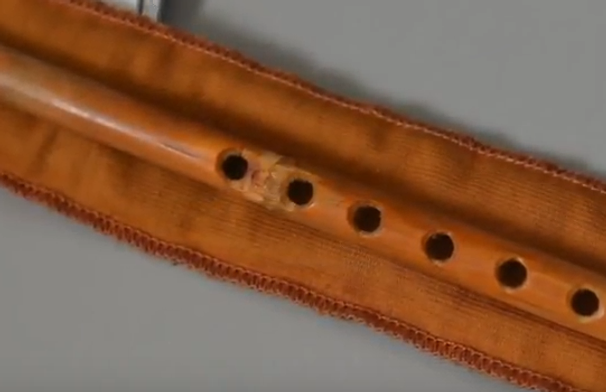
Mpantoura or mantoura, a wind instrument made of a thin cane. It belongs in the same category as the klarinet, it has a percussion reed on the side of the sealed end, which with the blowing of the mouth produces the sound.
Sizes usually varies from 20 until 30 cm, while sometimes it is being made of two pieces of cane: one of them has the holes for the fingers and the other one, the smallest, has the reed. Its sound is delicate, more acute than the sound of the hambioli, because the cane is thinner.
Mandolin
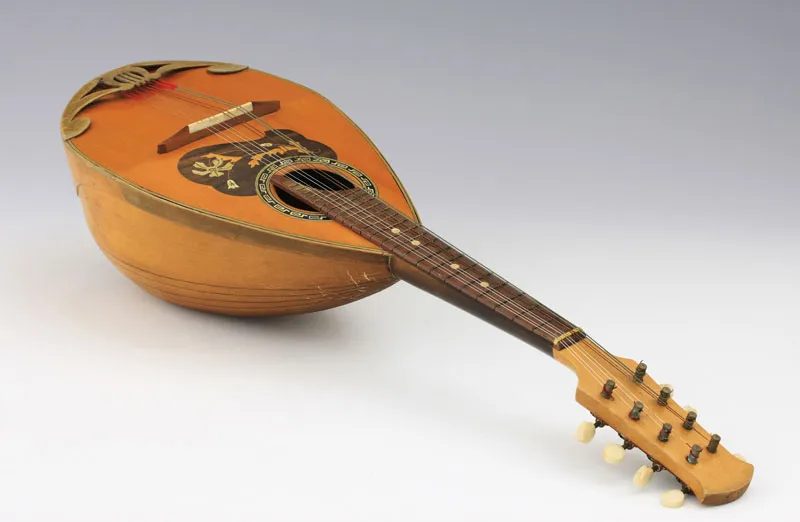
Mandolin is a stringed musical instrument in the lute family and is usually plucked with a plectrum or “pick”. It commonly has four courses of doubled metal strings.
The mandolin has a long tradition in the Ionian islands (the Heptanese) and Crete. On the island of Crete, along with the lyra and the laouto (lute), the mandolin is one of the main instruments used in Cretan Music. It appeared on Crete around the time of the Venetian rule of the island. Different variants of the mandolin, such as the “mantola,” were used to accompany lyra, violin, and laouto.
Ntaoulaki

A small drum which is played with 2 sticks. In the past it was very widely known, on the Eastern Crete, but today it has almost disappeared.
Lyra
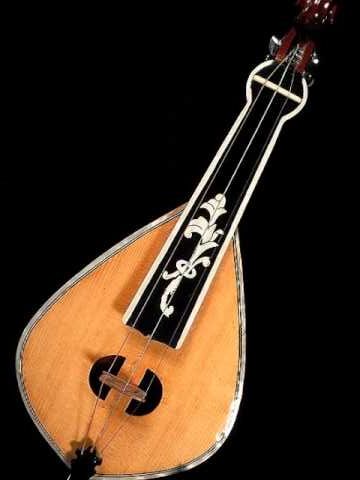
The Cretan lyra; is a Greek pear-shaped, three-stringed bowed musical instrument, central to the traditional music of Crete and other islands in the Dodecanese and the Aegean Archipelago, in Greece. The Cretan lyra is considered to be the most popular surviving form of the medieval Byzantine lyra, an ancestor of most European bowed instruments.
Lyra is held vertically on the player’s lap, in the same way as a small viol, rather than being placed under the chin of the player like a violin
The Cretan lyra is closely related to the bowed Byzantine lyra.
With regard to the period of introduction of the bowed instrument in the island, there are four schools of thought:
The Byzantine lyra was introduced after 961 AD, when the island was reconquered from Arabs
-
The lyra was introduced from the islands of the Dodecanese, and entered the island through the eastern town of Sitia.
-
The lyra was gradually introduced into the island’s traditions as a popular element of the Byzantine music and tradition, in a similar manner that lyra was introduced in other regions
-
By the local tradition, the Cretan lyra has been spontaneous developed in the island of Crete some time before the year 961 AD
There are three major types of Cretan lyres:
-
Lyraki: a small model of lyra.
-
Vrontolyra: which has a very strong sound, ideal for accompaniment of songs.
-
Common lyra: popular in the island today; designed based on the combination of lyraki with the violin.